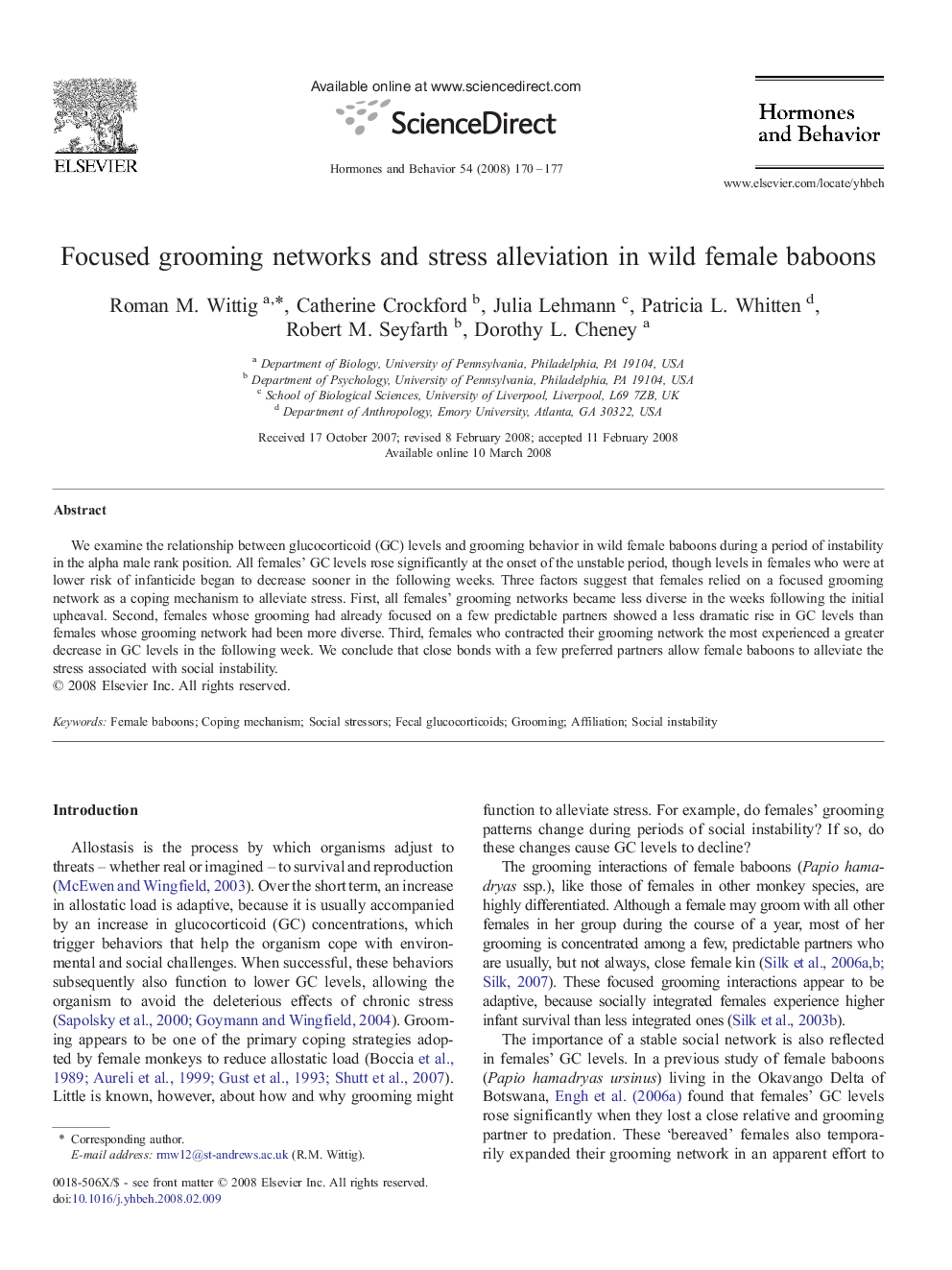| Article ID | Journal | Published Year | Pages | File Type |
|---|---|---|---|---|
| 322918 | Hormones and Behavior | 2008 | 8 Pages |
We examine the relationship between glucocorticoid (GC) levels and grooming behavior in wild female baboons during a period of instability in the alpha male rank position. All females' GC levels rose significantly at the onset of the unstable period, though levels in females who were at lower risk of infanticide began to decrease sooner in the following weeks. Three factors suggest that females relied on a focused grooming network as a coping mechanism to alleviate stress. First, all females' grooming networks became less diverse in the weeks following the initial upheaval. Second, females whose grooming had already focused on a few predictable partners showed a less dramatic rise in GC levels than females whose grooming network had been more diverse. Third, females who contracted their grooming network the most experienced a greater decrease in GC levels in the following week. We conclude that close bonds with a few preferred partners allow female baboons to alleviate the stress associated with social instability.
